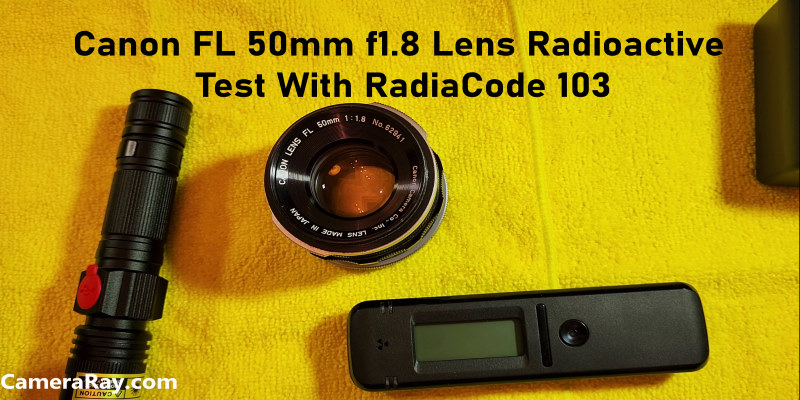
Canon FL 50mm f1.8 Lens Radioactive Test With RadiaCode 103 And GQ GMC 600 Plus Geiger Counter.
Testing the Canon vintage camera lens for radioactivity with a radiation detector, spectrometer, and a UV flashlight. Many old manual focus camera lenses contain Thorium and other elements that release detectable radiation.
The Canon FL 50mm f1.8 Lens: A Look into Its Radioactive Legacy
In the world of vintage camera lenses, few topics are as intriguing and complex as the presence of radioactive elements in certain lenses. Among these, the Canon FL 50mm f1.8 lens holds a unique place. This lens, produced during the 1960s and 1970s, is renowned for its sharpness, beautiful bokeh, and a surprising twist – it’s radioactive.
The Radioactive Element: Thorium
The reason behind the radioactivity of the Canon FL 50mm f1.8 lens lies in its use of thorium oxide in the glass elements. Thorium oxide was added to improve the refractive index and dispersion properties of the glass, thereby enhancing image quality. However, thorium is a naturally radioactive element, and its presence in the lens leads to a mild level of radioactivity.
You can find the correct Darkbeam UV 365nm Blacklight flashlight for testing here.
The RadiaCode 103 here.
The GQ GMC 600 Plus Here.
Understanding the Risks
First and foremost, it’s crucial to understand that the level of radioactivity in these lenses is quite low. It’s not enough to pose a significant health risk under normal use. However, prolonged exposure or direct contact with damaged elements (like a broken lens) could potentially pose health risks. As a precaution, it’s recommended to store these lenses separately and handle them with care.
The Impact on Photography
Despite its radioactive nature, the Canon FL 50mm f1.8 lens is celebrated for its optical qualities. Photographers often praise its sharpness, contrast, and the unique quality of the images it produces. The slight yellow tint imparted by the thorium can even add a warm, vintage feel to photos.
Collectors’ Perspective
For camera collectors and vintage lens enthusiasts, the Canon FL 50mm f1.8 lens is a prized possession. It represents a unique period in lens manufacturing and stands as a testament to the innovative, yet sometimes unconventional, approaches of the past. The lens’s radioactivity often adds to its allure, making it a conversation piece and a historical artifact.
Modern Use and Precautions
For those interested in using the Canon FL 50mm f1.8 lens today, it’s essential to take some precautions. Always check the lens for any signs of damage, particularly cracks or chips in the glass, as this could potentially increase the risk of exposure to radiation. When not in use, storing the lens in a lead-lined case or away from living spaces is advisable.
Wrap-up
The Canon FL 50mm f1.8 lens is more than just a photographic tool; it’s a piece of history. Its use of radioactive thorium oxide is a fascinating glimpse into the past practices of lens manufacturing. While it requires careful handling due to its radioactive nature, its optical qualities and the unique character it imparts to photographs continue to make it a sought-after lens among photographers and collectors alike. As with any piece of vintage equipment, it’s a blend of art, science, and history, offering a unique window into the evolution of photographic technology.